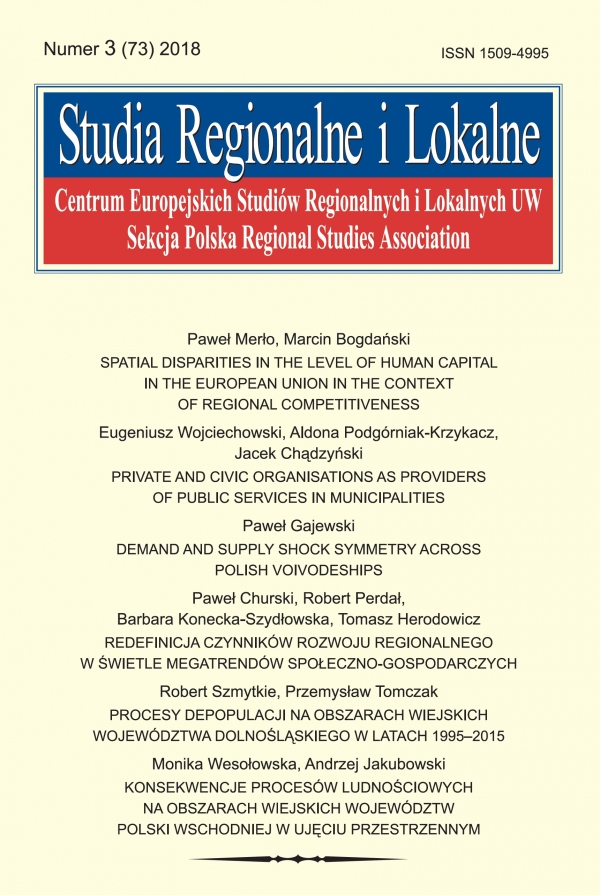Published in
3(73)/2018

- Paweł Merło, Marcin BogdańskiSpatial disparities in the level of human capital in the European Union in the context of regional competitiveness[more]
- Eugeniusz Wojciechowski, Aldona Podgórniak-Krzykacz, Jacek ChądzyńskiPrivate and civic organisations as providers of public services in municipalities[more]
- Paweł GajewskiDemand and supply shock symmetry across Polish voivodeships[more]
- Paweł Churski, Robert Perdał, Barbara Konecka-Szydłowska, Tomasz HerodowiczRedefining regional development factors in the light of socio-economic megatren[more]
- Robert Szmytkie, Przemysław TomczakDepopulation in rural areas of Lower Silesia in the years 1995–2015[more]
- Monika Wesołowska, Andrzej JakubowskiSpatial consequences of population processes in rural areas of the voivodships of Eastern Poland[more]


